St. Catherine from where we left her
We continue the journey to discover Santa Caterina del Sasso.
Leaving the chapter house behind, we discover an old press that dates back to 1759 and is protected by the rock above it. With it the monks could press the grapes and olives that came from the lands belonging to the hermitage. This press was expertly restored in 1988.
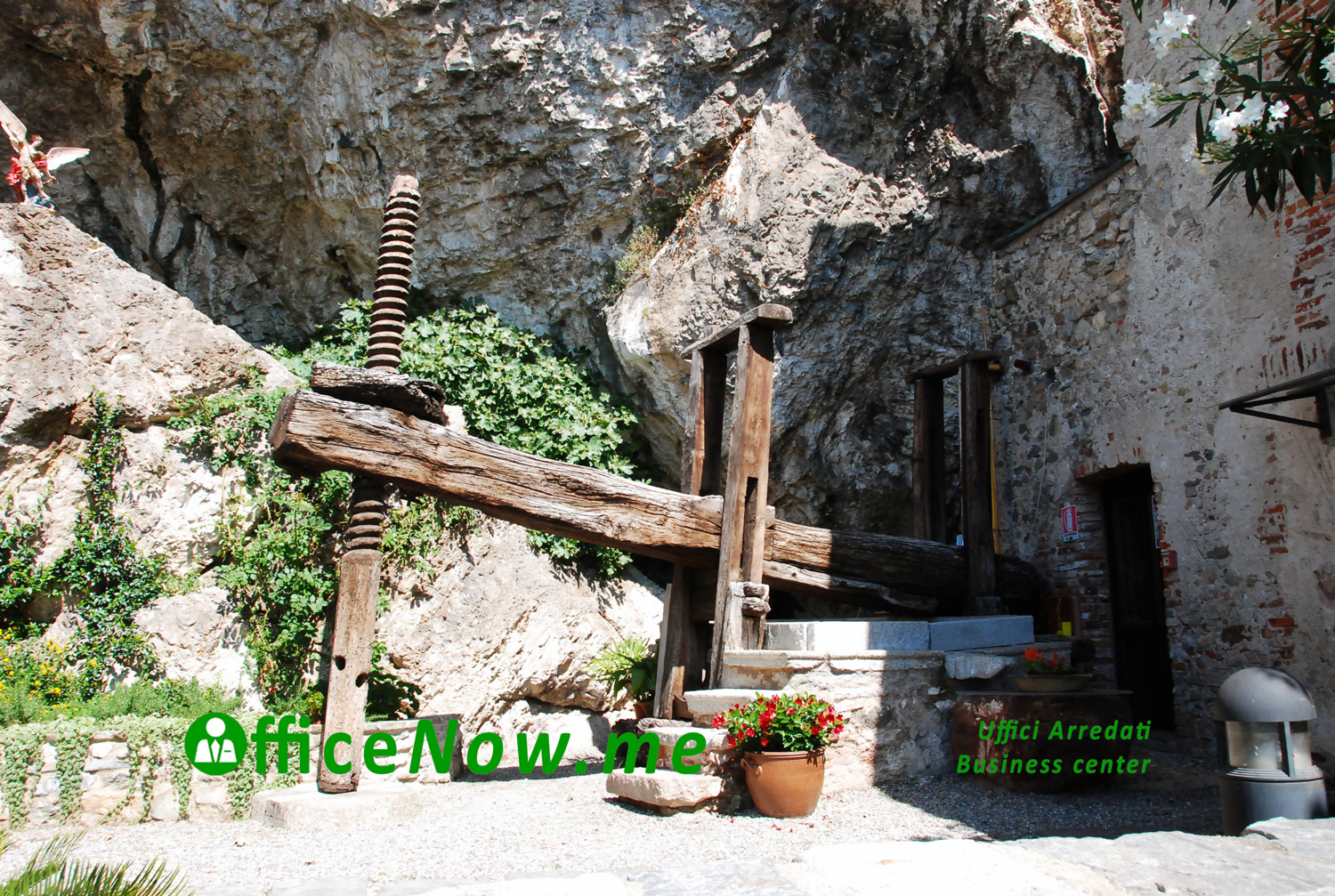
Immediately afterwards we find the convent: a 13th – 15th century building which once housed the kitchen with the large fireplace and the oven for baking bread.
On the upper floor, a long corridor, punctuated by eight windows, served as a junction for the cells created inside the ancient corridor.
On the right we find a fissure in the rock which in 1915 was transformed into the Lourdes cave, with, inside, a statuette of the Virgin Mary.
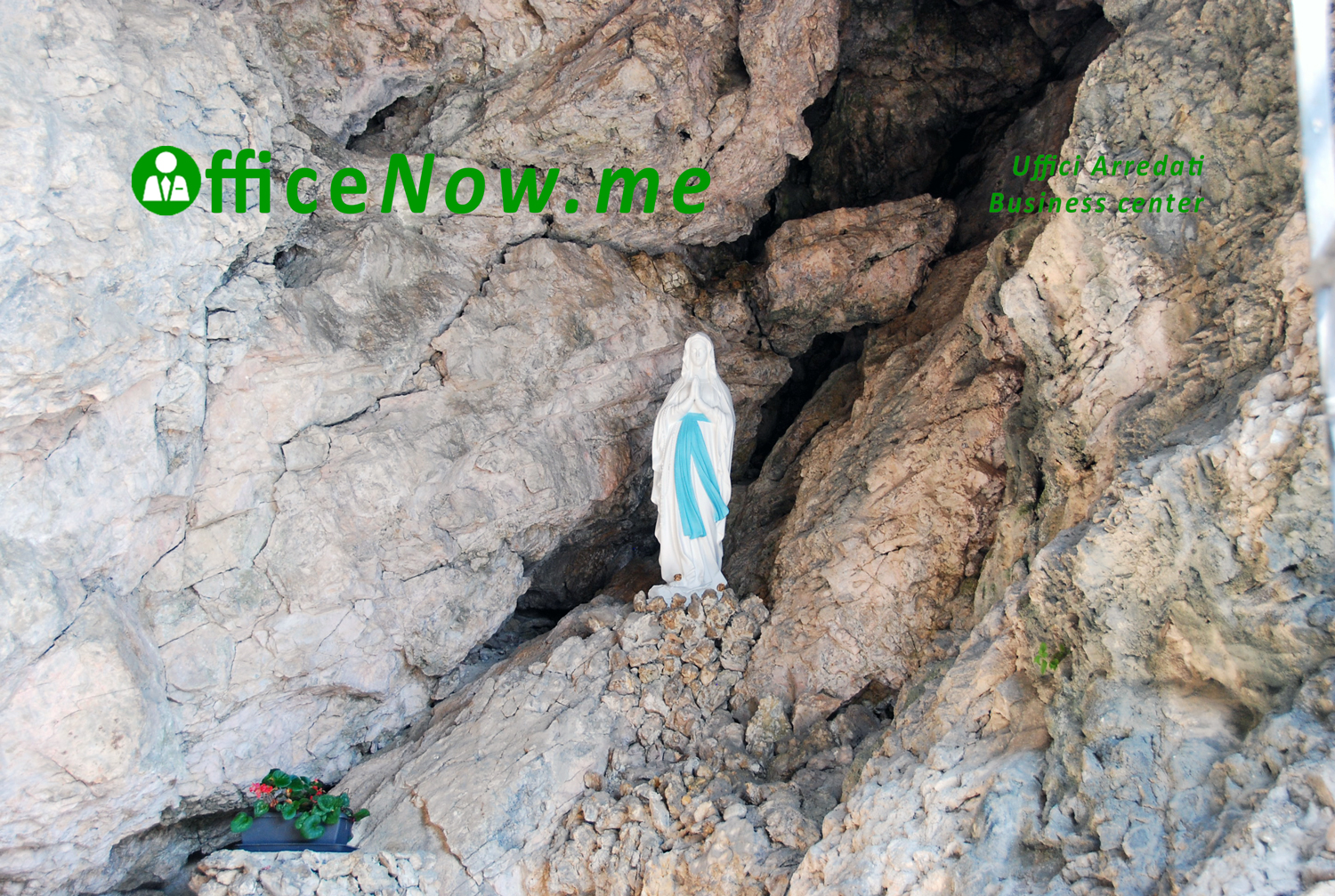
Continuing we find ourselves in front of the church in a small courtyard which overlooks a sixteenth-century Renaissance style portico.
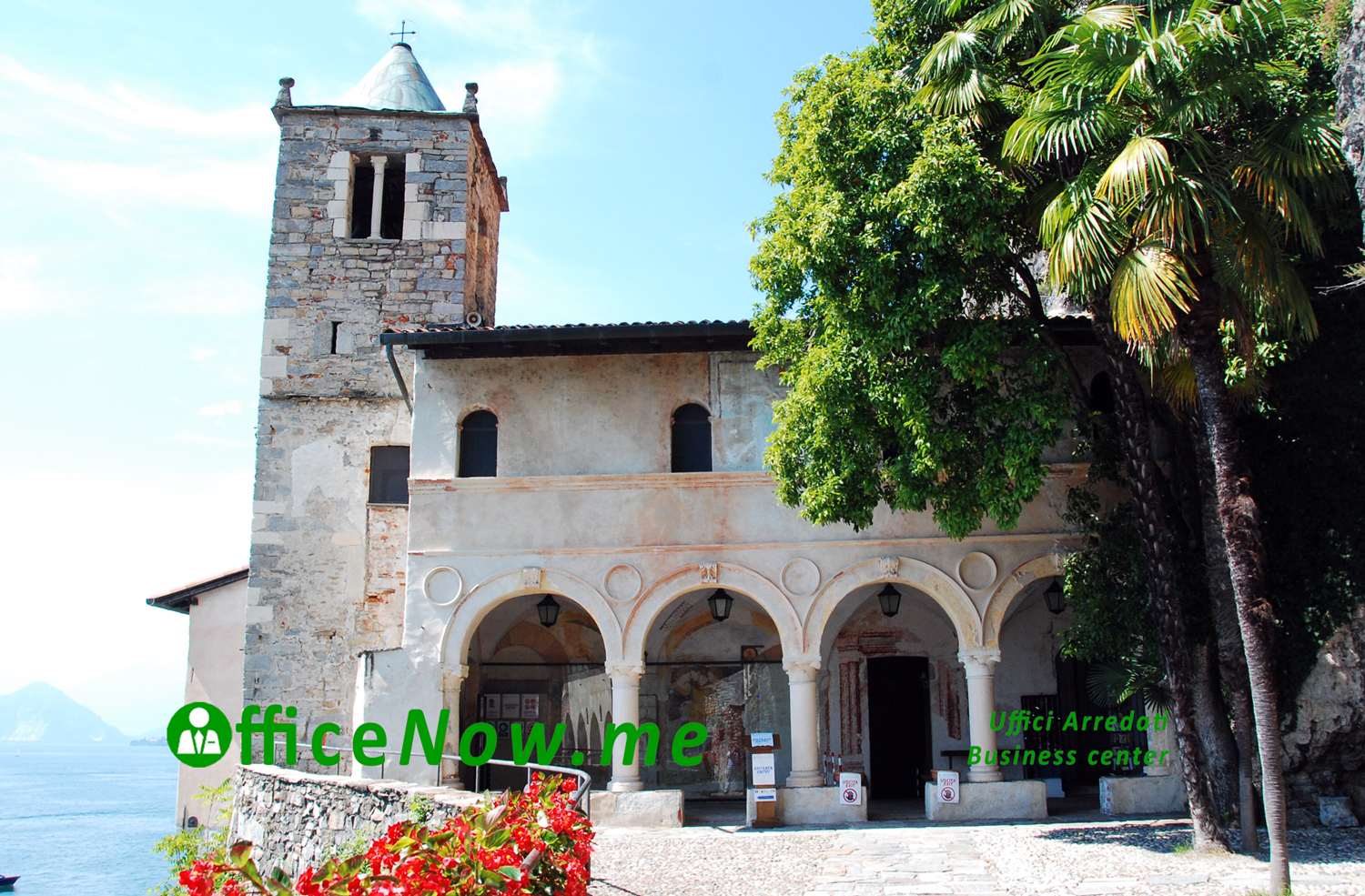
Under the portico we can admire three sixteenth-century frescoes representing the life and martyrdom of Saint Catherine.
The first one further to the left, towards the lake, had already almost completely disappeared in 1861.
Between the two walled doors appears a fresco with a piece of the robe of Saint Peter, Saint Nicholas and Saint Peter the Martyr, Saint Lucia, Saint Mary Magdalene and Saint Catherine.
This pictorial work dates back to the second half of the 16th century and was expertly restored in 1990.
On the upper floor a nucleus of cells had been created for the monks.
The church
The church of Santa Caterina dates back to the 16th century and was born from the fusion of pre-existing buildings which gave rise to a single hall.
Three areas unfold from the central nave which are distinguished based on the different levels of the floor and vaults.
On the side facing the mountain there are three chapels which are thought to have been part of the pre-existing churches.
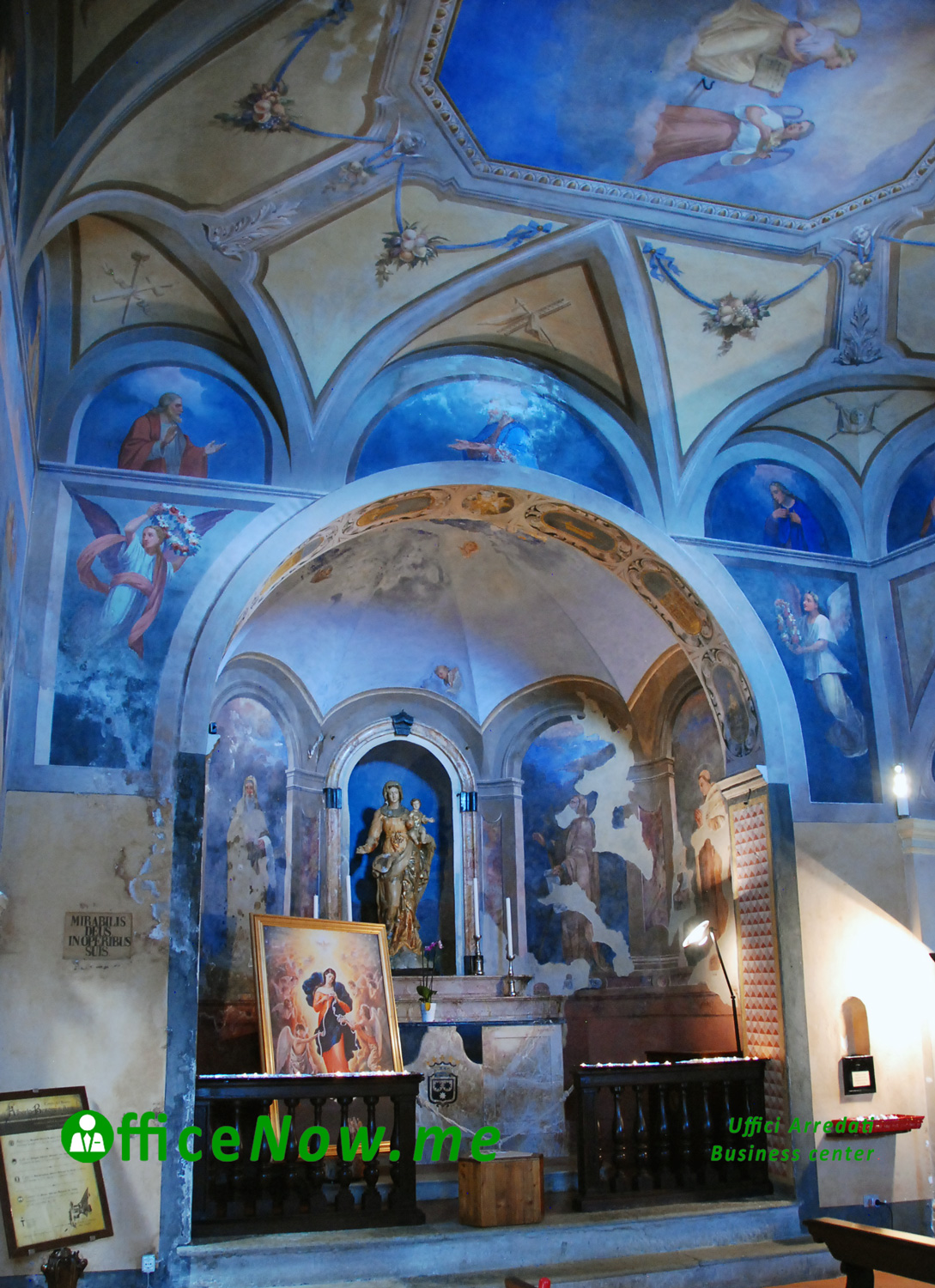
On the side towards the lake there is a smaller nave which has the simple function of a junction and connection between the ancient entrance, which was located at the back of the church, and the exit onto the small portico we previously talked about.
The current presbytery is covered by a high vault and highly decorated with stuccos and frescoes. All the frescoes in this span are the work of Giovanni Battista de Advocatis of Milan.
The central lobe is octagonal in shape and presents a crowded vision of paradise with the Eternal Father in the center surrounded by a crowd of angels.
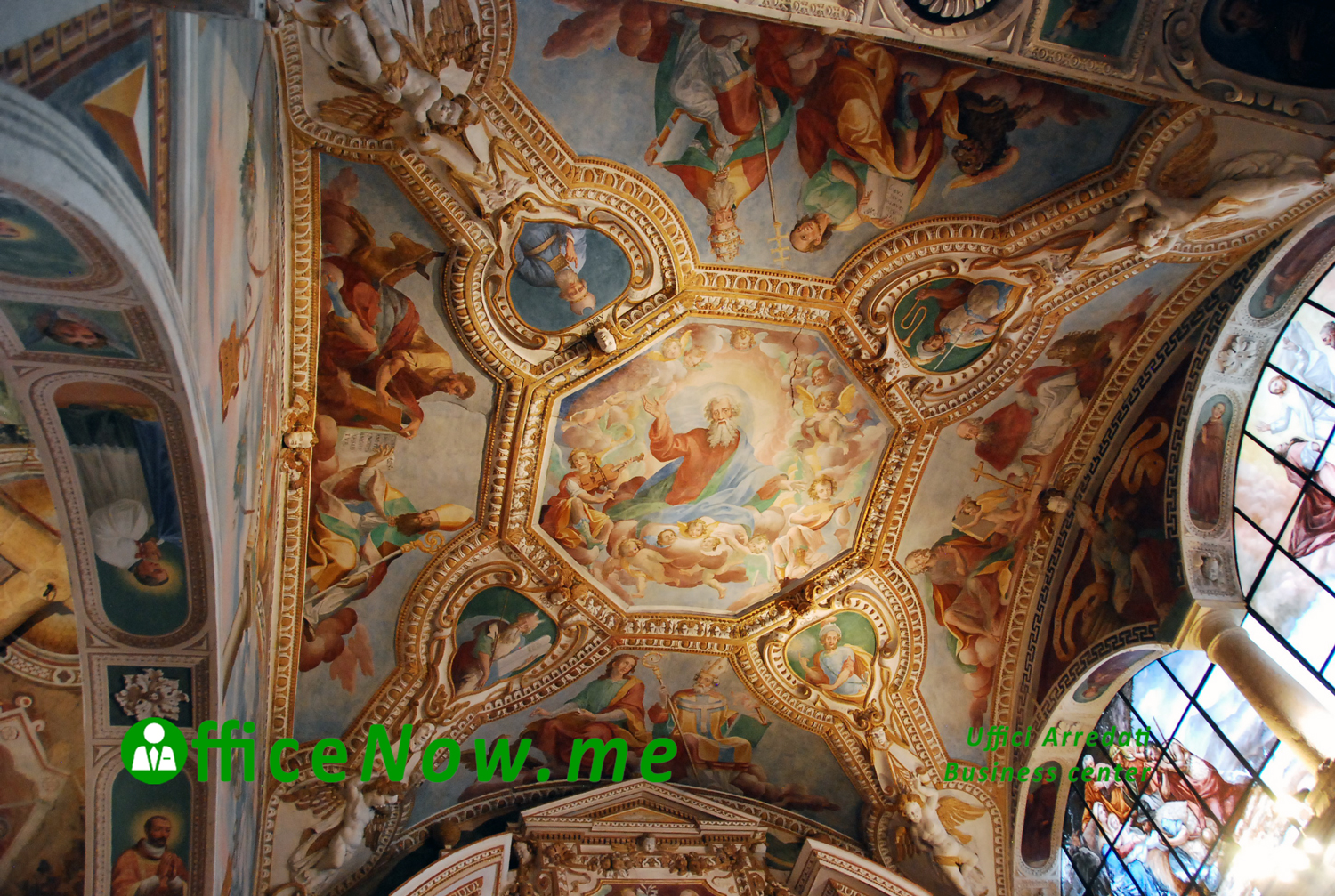
In the four ribs we find some figures from the Old Testament represented: Moses with the two tables, Joshua, Gideon and Aaron.
In the sails we find the four Fathers of the Latin church flanked by the four evangelists with their symbols: Saint Ambrose holding the whip in his hand with Saint John and the eagle next to him; Saint Augustine with Saint Luke and the ox; Saint Jerome with Saint Matthew and the angel; Saint Gregory the Great with the papal tiara and Saint Mark with the lion.
OfficeNow business center, accompanying you to discover these wonderful places, asks: What is better than welcoming your customers into the office and inviting them on cultural trips?
Now all that remains is to wait for the next article to discover the latest wonders linked to this magical place in the province of Varese.
Stay with us so you don't miss the last appointment!
